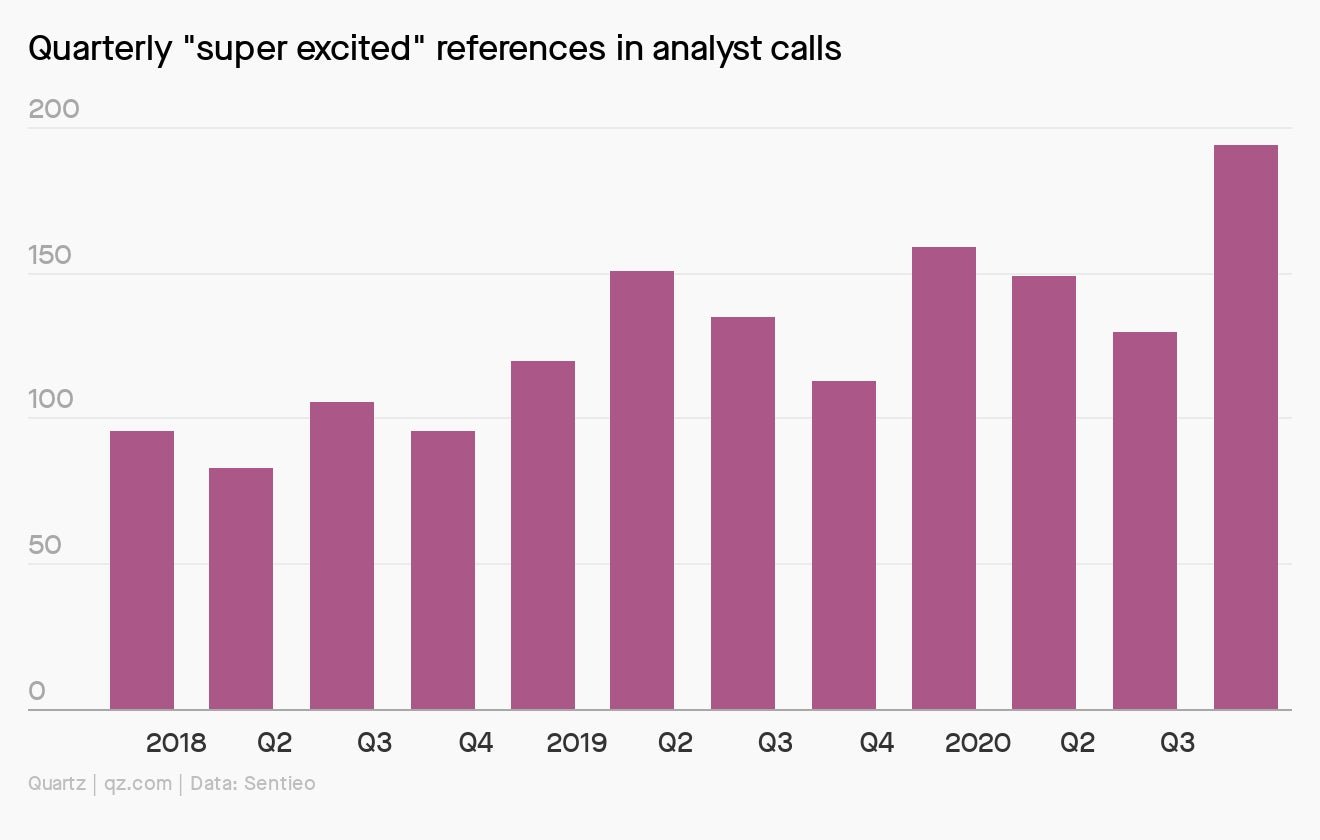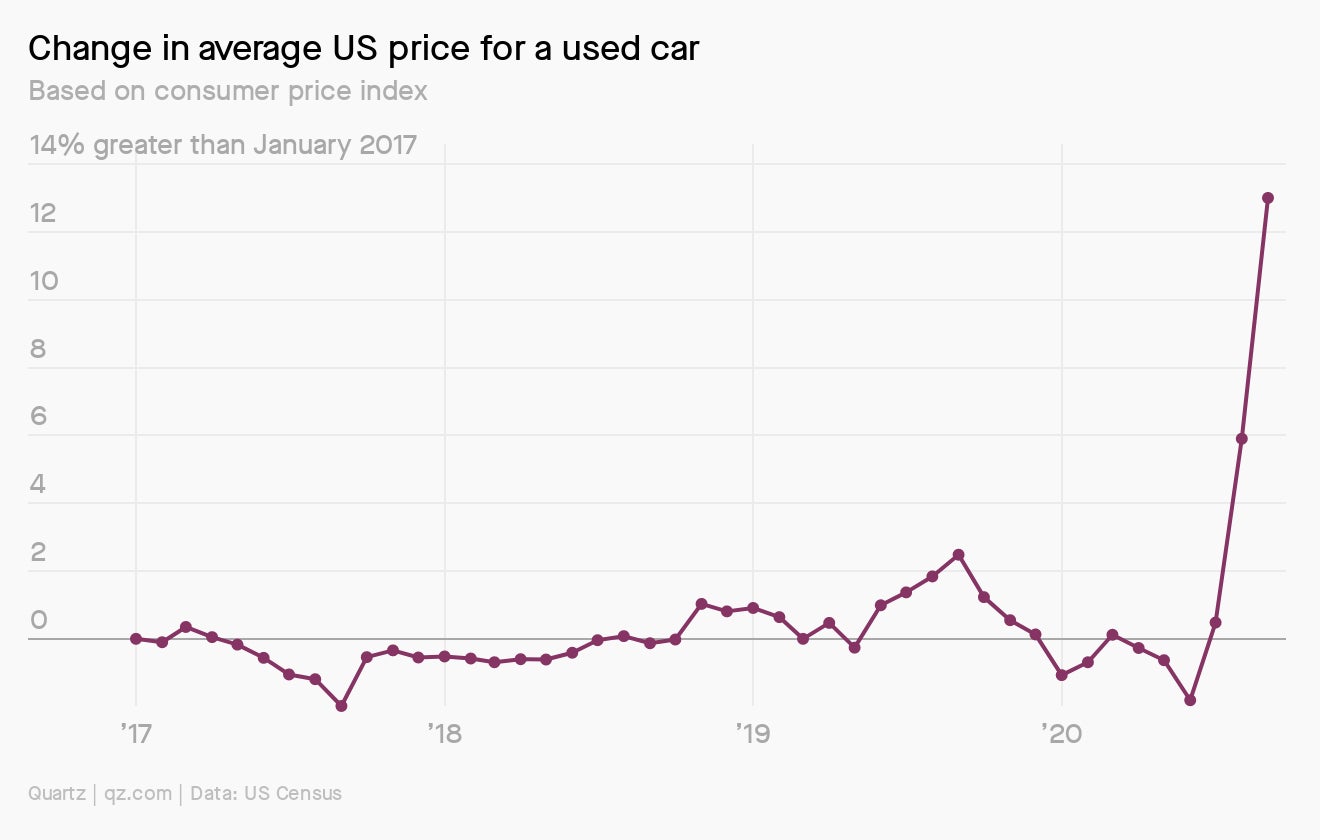Coronavirus: Guess who’s coming to dinner
Hello Quartz readers,

Hello Quartz readers,
At this time last year, more than 55 million Americans were gearing up to make a trip of 50-plus miles for Thanksgiving, the holiday’s second-highest travel volume in almost two decades. This year, that number will be much smaller—just like the turkeys hitting sparsely populated dinner tables on Nov. 26.
We asked around the Quartz newsroom to see how Thanksgiving is going down for our US staff. The answers were as varied as our taste in side dishes:
- Susan, news editor: “We’re canceling it entirely. My relief at being able to cancel it made me realize how much Thanksgiving—and the days of cooking and herding my giant family around—just implies 100% stress for me. Too much riding on one single meal.”
- Alex, special projects editor: “Thanksgiving is the most important holiday for my family. I’m planning to quarantine for two weeks before driving down to be with my parents, though I suspect my brothers won’t fly in.”
- Nico, tech reporter: “I’m driving down to my parents’ place in November and then just staying through Christmas. We’re paring the party back to just immediate family, so it’ll be seven people in the backyard.”
Remember, there’s no perfect answer here. As science and health reporter Katherine Foley put it to our staff: “These are highly individual decisions that really depend on the health of those involved, and their next tier of interactions.” So tell us, what are you doing for TG 2020?
Okay, let’s get started.
How to pick a lockdown
As a resurgence of coronavirus cases leads to renewed restrictions in parts of the US, UK, Spain, France, and Italy, March-style lockdowns could be on the horizon again. So how can people psychologically and logistically prepare?
For the answer—or at least an answer—we turned to January Wild, a consultant clinical psychologist and author of Be Extraordinary. In an interview with Quartz, Wild shared tips from her book that she believes could also help people manage anxiety or distraction while in lockdown:
📅 Make plans: “As much as we might rebel against the idea, it’s really important to have a routine,” Wild says, “particularly Monday to Friday, so that we’re not staying in bed all day and getting depressed.” She recommends planning ahead, whether alone or with others, and making time for at least one enjoyable activity a day.
🥕 Three-minute carrots: If you’re working from home and feeling down, it might be more difficult to focus on what you have to do. Wild suggests setting short achievable tasks, like finishing one chapter of a book, and then deciding every three to five minutes whether to keep going or reward yourself with a “carrot.” That carrot can be anything that makes you happy, like a few minutes of your favorite show or a walk in the park.
📓 Worry diary: If you find yourself worrying a lot during this time, you might find it helpful to keep a worry diary and reflect back on it at the end of every week. Wild typically works out with her patients what percentage of the things they worried about actually happened: “We normally find that about 90% don’t come true.”
🏖️ Positive images: If you find it difficult to stop worrying, Wild recommends a simple nightly exercise. “We can break the cycle of overthinking by calling to mind a positive image. It can be of you performing really well in some area that you’re worried about, or it could just be an image of a beach or the sunshine.”
For many people, a successful second lockdown would be one in which they simply keep their jobs and don’t get sick. But there’s also an opportunity for what’s known as “post-traumatic growth” for those who want and can afford it. That doesn’t have to be ambitious—in her book, Wild advocates “daring to be average”—“but if you do have a hobby, it’s a wonderful opportunity to gain some skills in that area without the pressure of having to be perfect.”
Group focus
Speaking of making the best of a bad situation, last week we asked for your top tips on staying sane while the pandemic drags on. The replies were manifold, and centered on four key themes:
🌳 Go outside: Reader Judy is spending time in nature, Kerry is riding her mountain bike in the country, and Valeria is dancing in her backyard while “not giving too much thought to my neighbors gawking through their window.”
🏊 Exercise: Chantal is swimming and doing yoga six times a week, Don is brushing up on his pickleball, and many of you are taking long walks. As reader Hugh put it, “I want to emerge at the other end of this thing in a position where I’m better equipped to live a fulfilling life. That means being healthy enough to enjoy it.”
🧠 Expand your mind: Sindy is figuring out how to make soap, Margaret is reading all the books she can find, Lili is enjoying online webinars, and Cammie is vibing to Pink Floyd’s The Dark Side of the Moon.
🕑 Find a routine: Teresa isn’t letting herself work weekends, Paulette is making prayer a habit, and Richard is trying to complete one practical thing each day that benefits others. One reader sent a single-word response that we suppose could also constitute a routine: “Scotch!”
Get “super excited”
An uncontained pandemic. A shrinking economy. What could corporate executives possibly be excited about? A lot, it turns out. Execs said they were “super excited” more than ever in the third quarter, according to a Quartz analysis of transcripts from earnings calls, conferences, and analyst and shareholder meetings.

That optimism isn’t denial: As companies post third-quarter earnings, their results are trending better than expected. Some 85% of companies in the S&P 500 have reported earnings per share that exceeded analyst estimates, and 81% of them posted a revenue surprise.
Not so “super excited” yourself? Join us for a free virtual workshop on Oct. 29 from 11am-12pm ET, where we’ll be talking about how to support mental health at every level of your organization. Whether you’re an individual contributor or a leader in middle- or upper-management, we’ve got some advice with your name on it.
A dramatic cliffhanger
The world’s movie theaters are (for real this time) facing an existential crisis. No company exemplifies this more than AMC Entertainment, the 100-year-old owner of the biggest theater chain in the world. With no new movies to put in cinemas—and would-be moviegoers reluctant to see the few that are screening—AMC is quite literally running out of cash. Happy centennial! Your present is bankruptcy.
$1.1 billion: AMC’s market capitalization around this time last year
$293 million: AMC’s market cap as of Oct. 27
85%: Decline in year-to-date AMC theater attendance compared to 2019
$11.3 billion: Total US box office revenue last year
$1.9 billion: Total US box office revenue so far this year, including January through March
15 million: Number of shares of stock AMC agreed to sell to Goldman Sachs and Citigroup
0: Number of AMC theaters open in New York and Los Angeles, its two biggest markets
Take a peek at our rundown on AMC’s life-or-death moment, the latest in a series of company profiles we send to Quartz members each week. To get these deep dives directly in your inbox, sign up for a free trial today, or take 20% off your first year with the code QZTWENTY.
Feeling used
From June to September, the typical cost of a used car in the US soared by 15%, an increase so dramatic that it’s had a major impact on the government’s inflation numbers. The US Bureau of Labor Statistics reported overall inflation grew 0.2% from August to September, but without the increase in used car prices, there would have been no inflation at all.

Three main factors are driving demand and prices. First, economic uncertainty tends to push consumers toward used cars; a big investment in a new car doesn’t make sense when your job feels tenuous. Second, many essential workers who would normally use public transit are opting to get a car. Finally, factory shutdowns in early 2020 limited new car options, leading more consumers to look to the used market.
Essential reading
- The latest 🌏 figures: 43.6 million confirmed cases; 29.3 million classified as “recovered.”
- Paid out: Digital handouts on Venmo reveal a fraying social safety net.
- It’s curtains: A financial crisis is threatening US arts organizations.
- Panic glutton: Are people having more panic attacks?
- Home shopping network: The latest trend in luxury is buying in your home country.
- Room with a view: The secret to better Zoom calls is zooming out.
Our best wishes for a healthy day. Get in touch with us at [email protected], and live your best Quartz life by downloading our iOS app and becoming a member. Today’s newsletter was brought to you by Annabelle Timsit, Dan Kopf, John Detrixhe, Adam Epstein, Katie Palmer, and Kira Bindrim.